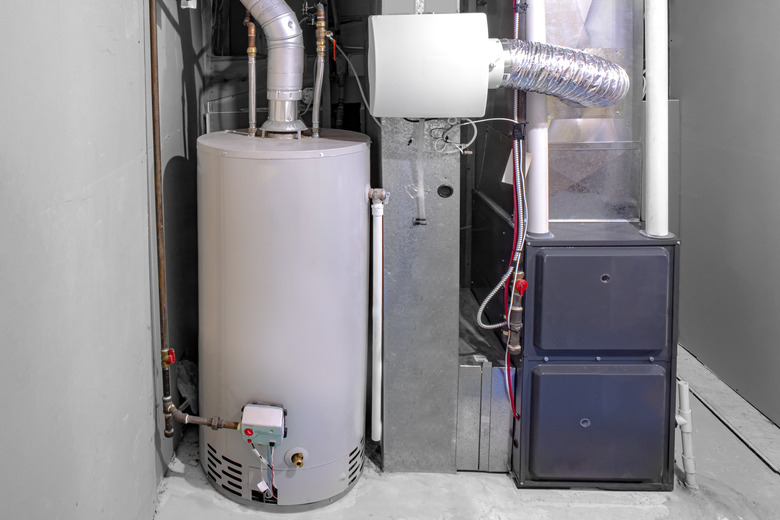Where Is A Pilot Light Located On A Furnace?
We may receive a commission on purchases made from links.
If you can't find the pilot light on your gas furnace, there's a good chance the furnace doesn't have one. They were common on older furnaces, but because they waste gas, they have largely been replaced with more efficient, easy-to-replace electronic ignitors. If you purchased your furnace within the last 15 to 20 years, you're unlikely to find a pilot light.
However, it may be the case that your furnace is a reliable workhorse that has far outlived its life expectancy and your attitude being not to fix what isn't broken, you've never had the opportunity to relight the pilot. On the other hand, you may have moved into a house with an older furnace, and you want to be prepared for problems as winter approaches. Never fear — if the furnace has a pilot, it's easy to find, and relighting it is no problem.
Tip
If your furnace has a pilot light, you can find it by locating the gas valve and following the two smaller tubes attached to it to their termination points.
How to Find the Pilot Light
How to Find the Pilot Light
To locate the pilot light on a gas furnace, you first have to remove the access cover, which usually just lifts off. Once you've exposed the furnace burner assembly, look toward the bottom and you should see a dial (usually red) with markings on it that say "on, "off" and "pilot." That dial is part of the gas control valve, and once you've found it, you're getting close to finding the pilot.
Note three tubes attached to the base of the rectangular gas valve housing. The large one feeds the gas burners, but the two smaller ones will lead you to the pilot. One is the pilot supply tube itself, and the other is the tube for the thermocouple, which is placed right next to the pilot orifice. If the pilot is burning, you should see a small blue flame burning at the end of the pilot tube, which extends into the burner housing. If the pilot isn't burning, you may need a flashlight to see the end of the pilot tube where the pilot orifice is located.
How to Light the Pilot
How to Light the Pilot
If the pilot is out, you should see instructions for relighting it on the furnace access cover or on the furnace itself, directly above the gas valve. While it's important to follow these instructions exactly, the procedure is more or less the same for all furnace pilot lights.
Turn the gas control dial to "off" and wait five minutes. This is a safety procedure to make sure there is no residual gas in the furnace when you light the pilot. After the time has elapsed, turn the dial to "pilot" and push it in while you hold to the pilot orifice a lit match, a long-reach lighter or a tightly rolled piece of paper burning at one end. If you see a small button next to the gas control, that's a spark ignitor. Press it repeatedly until the pilot starts.
When the pilot ignites, keep the control dial depressed for 20 seconds or longer and then release it and turn it to the "on" position. If the pilot goes out, repeat the procedure but this time, hold in the dial for a longer amount of time.
The Pilot Won't Light or Won't Stay Lit
The Pilot Won't Light or Won't Stay Lit
If you can't get the pilot to light, check the gas supply valve to make sure it's on. If your furnace runs on propane, check the gauge on the propane tank to make sure the tank isn't empty. If you have gas, the problem is probably an obstruction in the pilot tube, and unless you're comfortable working around furnaces (which you probably aren't since you didn't know where the pilot was), call a furnace repair specialist.
If the pilot comes on but won't stay lit no matter how long you hold in the dial, the thermocouple needs to be tested and replaced if it's bad. This is probably another job for which you'll want to call a service pro.
